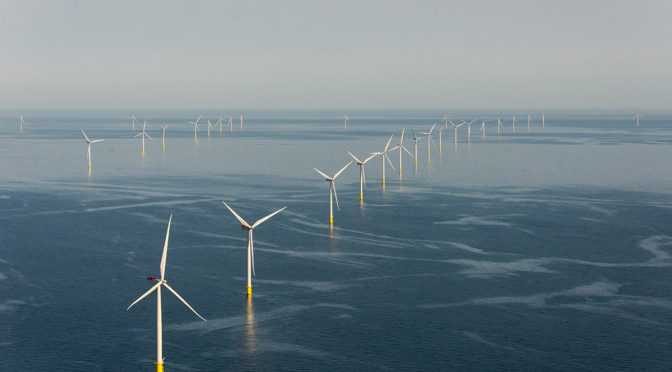The European Forum for Renewable Energy Sources (EUFORES) has stepped up its lobbying of the Baltic States’ governments to expedite their development of offshore wind.
EUFORES is a cross-party network of members of the European Parliament and the legislatures of individual EU member states.
EUFORES’ president, Claude Turmes, who is also an MEP, signed a declaration in support of the development of wind power generating capacity in the Baltic Sea. “We are at a decisive moment of planning and deciding Europe’s energy and climate policy for the years ahead,” he said.
Turmes is an influential backer, having led some of Europe’s key energy and climate policy reforms since 2000. The Baltic Sea Declaration on Offshore Wind was signed by officials from Estonia, Finland, Sweden, Denmark, Latvia, Lithuania, Germany and Poland. Its goal is to expand offshore wind power generating capacity across the Baltic region.
In addition to the EUFORES moves, the European wind energy association, WindEurope, has urged Estonia to lead the region in pursuing offshore wind power generation. The association’s CEO, Giles Dickson, said the Estonian government, which currently holds the EU presidency, should aim to build up political momentum behind the development of offshore wind and replicate the advances in the field that have been made in the North Sea.
The EUFORES declaration that was handed over to Estonia’s government covers several aspects of regional co-operation in the Baltics. It identifies the need to establish stable and clear legal frameworks, whilst also urging better co-operation on spatial planning and grid connection.
A first step towards achieving these objectives is to ensure that governments draft clear national energy climate plans that spell out the volumes of offshore wind that they intend to deploy post-2020.
Growth trajectory
WindEurope recently published a new analysis of wind power scenarios for the Baltic Sea up to 2030. The group said that the region could become the second largest for offshore wind in the world, with the potential for capacity to expand from the 1.5 GW that is installed today to around 9 GW by 2030.
Signs of the pace picking up are already apparent. Estonian wind developer Nelja Energia recently announced it was moving forward with plans to build the country’s first offshore wind farm near the island of Hiiumaa. It is anticipated to comprise of 100-160 wind turbines with an aggregate capacity of 700-1,100 MW. And Tuuliki Kasonen, general manager of the Estonian Wind Power Association (EWPA), told NewsBase Intelligence (NBI) a second site had also been identified for a new wind farm.
“One of them, [the site] near Hiiumaa, is at an advanced stage and the other, in the southwest, is through environmental impact evaluation. We hope to have the first installations [generating power] by 2020,” she said.
Construction of Hiiumaa wind farm is scheduled to start in the second half of 2018, with commissioning slated for 2020.
Yet while Tallinn makes progress, Lithuania’s prospects appear more muted. Aleksandras Paulauskas, president of Lithuania’s Association of Wind Energy Producers (LVEA), told NBI: “We cannot expect a breakthrough in the field until 2020, by which stage the amendments to the Law on Renewables Energy are due to be passed.”
He said political pressure had delayed the deployment of offshore wind in the country. “[The amendments] were supposed to go into effect in 2016, but were put off owing to the severe competition among different lobbying groups,” he said.
Paulauskas said that three Lithuanian companies had cleared the regulatory hurdles to begin work on offshore wind projects, but he said there was a lack of political will to get them off the ground. The government is currently heavily focused on developing gas-fired power capacity that uses LNG imported via Klaipeda as feedstock, which he said “has created unfair conditions to clean energy sources.”


